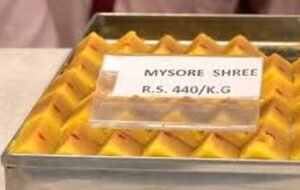
India’s New Strategic North-East Corridor to Kolkata via Sea
India’s New Strategic North-East Corridor to Kolkata via Sea: A Boost to Connectivity & Security
Why in News:
India has decided to construct a new highway from Shillong (Meghalaya) to Silchar (Assam) as an extension of the Kaladan Multi-Modal Transit Transport Project (KMTTP). This move aims to bypass Bangladesh and create an alternate connectivity route via sea from the North-East to Kolkata, improving access and reducing strategic vulnerabilities.
This development has multiple strategic, economic, environmental, and diplomatic implications—making it highly relevant for CLAT Current Affairs 2026, especially under General Knowledge, Legal Reasoning (infrastructure, treaties), and even essay topics on India’s connectivity diplomacy.
Introduction:
North-East India has long faced connectivity issues with the Indian mainland due to its geographical isolation, dependency on the narrow Siliguri Corridor (Chicken’s Neck), and geopolitical sensitivities with neighboring countries like Bangladesh and China.
To address these vulnerabilities and promote regional integration, the Government of India has undertaken a new high-speed road-sea project linking Shillong to Silchar, from where cargo will move to Kolkata via the Kaladan river route through Myanmar. The goal is to make the North-East less dependent on Bangladesh and to fortify India’s “Act East Policy.”
Point-Wise Summary of the Article
- Project Overview:
- A new high-speed highway from Shillong (Meghalaya) to Silchar (Assam) is being constructed.
- This will act as an extension to the Kaladan Multi-Modal Transit Transport Project (KMTTP) which links Kolkata to Sittwe port in Myanmar, and then to Mizoram via inland waterways and roads.
- Total length of the new road project: 166.8 km.
- Funding Agency: National Highways & Infrastructure Development Corporation Ltd. (NHIDCL).
- Geopolitical Purpose:
- This strategic route bypasses Bangladesh entirely.
- The move is seen as a response to Bangladesh restricting transit access to North-East India and leaning diplomatically towards China.
- According to Indian officials, this new corridor ensures reliable cargo movement and decreases dependence on Bangladesh for connectivity.
- Integration with Kaladan Project:
- The Kaladan Project links Kolkata seaport to Sittwe (Myanmar) by sea.
- From Sittwe, goods are carried inland via the Kaladan River to Paletwa, then by road to Zorinpui (Mizoram border).
- The new Shillong–Silchar highway will further link this network to Assam and other North-East states.
- Importance of Silchar as a Hub:
- Silchar connects Tripura, Mizoram, Manipur, and the Barak Valley region of Assam.
- The Shillong–Silchar highway will transform Silchar into a major connectivity and trade hub for the North-East.
- This is the first high-speed corridor project in such hilly terrain.
- Time-Saving Impact:
- Current Shillong to Silchar travel time: 8.3 hours.
- Post-project expected travel time: 5 hours.
- Technological Advancements:
- The route involves difficult terrain requiring:
- Slope stabilization
- Rainfall and landslide prediction tools
- LiDAR-based topographical surveys
- Advanced monitoring instruments like:
- Piezometers
- Rain gauges
- Inclinometers
- Geophones
- Structural Highlights of the Project:
- Total cost: ₹22,864 crore.
- Road length: 144.8 km in Meghalaya, 22 km in Assam.
- Construction will follow the Hybrid Annuity Model and Public-Private Partnership (PPP).
- Infrastructure to be built includes:
- 19 major bridges
- 153 minor bridges
- 26 flyovers
- 94 viaducts
- 36 underpasses
- 34 viaducts
- National and Regional Significance:
- Supports India’s Act East Policy by improving connectivity to Southeast Asia.
- Provides a direct route for goods movement between Kolkata and the North-East without crossing foreign territory.
- Boosts security and resilience, especially during conflict scenarios or diplomatic stand-offs.
- Strategic Avoidance of the Chicken’s Neck:
- The only land route connecting mainland India to the North-East is the 22-km wide Siliguri Corridor, also called the Chicken’s Neck.
- Vulnerable to blockades, weather disruptions, and enemy attacks during war.
- This new route offers a maritime alternative, enhancing redundancy and security.
Notes: Key Terms Explained for CLAT Aspirants
- Kaladan Multi-Modal Transit Transport Project (KMTTP):
- A joint India-Myanmar infrastructure project.
- Connects Kolkata to Sittwe (sea) → Sittwe to Paletwa (river) → Paletwa to Zorinpui (road) → into Mizoram.
- Designed to provide alternate connectivity to the North-East, bypassing Bangladesh.
- Siliguri Corridor / Chicken’s Neck:
- A narrow corridor (approx. 22 km wide) in West Bengal.
- Only land connection between India’s main territory and its North-Eastern states.
- Considered a strategic vulnerability.
- LiDAR (Light Detection and Ranging):
- A remote sensing method that uses light in the form of a pulsed laser to measure ranges.
- Used for mapping and predicting landslides in hilly infrastructure projects.
- Hybrid Annuity Model (HAM):
- A PPP financing model where the government pays 40% of the project cost during construction.
- The remaining 60% is paid as annuity over time, reducing the risk for private investors.
- Act East Policy:
- India’s strategic initiative to improve relations with Southeast Asia through economic, security, and connectivity efforts.
- Successor to the Look East Policy.
Relevance for CLAT 2026 Aspirants
- General Knowledge Section:
This event could be asked in questions like:
- Which project links North-East India to Kolkata via sea?
- What is the purpose of the Kaladan Multi-Modal Project?
- Why is Siliguri Corridor called the Chicken’s Neck?
- Legal Reasoning:
- Discussing international treaties and agreements with Myanmar and other BIMSTEC nations.
- Implications on land acquisition, environmental clearance, and federal cooperation between Centre and States like Mizoram, Assam, and Meghalaya.
- Essay/Descriptive Topics:
- “The strategic importance of connectivity in North-East India”
- “India’s infrastructure diplomacy with neighboring countries”
- “Reducing India’s dependence on foreign territories for internal movement”
Why CLAT Gurukul is Your Go-To for CLAT Current Affairs 2026
At CLAT Gurukul, our expert team ensures that:
- You receive daily curated current affairs with legal insights.
- Each topic is decoded for legal reasoning and its relevance in the CLAT General Knowledge section.
- Mock tests and quizzes simulate real CLAT patterns.
- With our best online coaching for CLAT, your preparation is strategically optimized for success.
Whether it’s international infrastructure diplomacy, geopolitical developments, or policy decisions, CLAT Gurukul ensures you’re always a step ahead.
Conclusion:
The construction of a new Shillong–Silchar highway connected to the Kaladan Project is more than just infrastructure—it is a strategic masterstroke. It provides India with a secure, alternative access route to the North-East, bypassing geopolitical risks posed by Bangladesh and the vulnerable Siliguri Corridor.
This development will reduce logistic costs, improve disaster resilience, and bolster India’s engagement with South-East Asia, all while reinforcing the central tenets of India’s Act East Policy.







